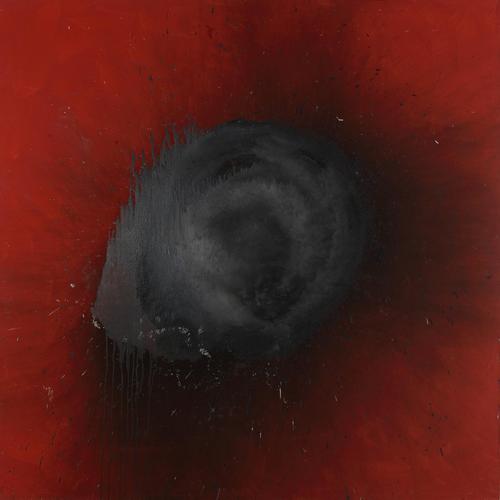"Rouge et noir" an exhibition of works by Otto Piene, founder of Group Zero, at Galerie Gmurzynska
- NEW YORK, New York
- /
- May 06, 2022

Galerie Gmurzynska New York is pleased to present Rouge et noir, an exhibition of works by Otto Piene (1928–2014), founder of Group Zero, lifelong pioneer of modern art, and key avant-garde figure of the second half of the twentieth century.
“Zero” signified “a new beginning” in Otto Piene’s book. At the end of the 1950s, in the ruins of Germany after the Second World War, Piene founded Group Zero with Heinz Mack. The movement was based on the idea that reconstruction might be achieved in an artistic way if it started with the mind. The initiative sparked a vast international movement known under the heading ZERO, which included such diverse and pioneering characters as Lucio Fontana, Yves Klein, Yayoi Kusama, Piero Manzoni, Getulio Alviani, Arman, Jean Tinguely, Daniel Spoerri, and Jesús Rafael Soto. The artists all shared a common will to make a clean sweep of the past in both artistic and political terms and to invent new forms of creation on the rubble of the old world. Throughout his career, Piene, a leading member of the movement, tirelessly explored diverse and innovative forms of visual creation including painting with fire, sculptures of stainless steel, painted ceramic, kinetic installations, film, performance, and Sky art. In this constant reinvention of art, Piene never ceased to challenge the meaning of the artistic act.
A mirror of Piene’s experimental creativity, the exhibition will present a selection of his painted ceramics, fire paintings, gouaches on paper and a light installation. The selection of works focuses on the fundamental combination of the colors red and black in Piene’s oeuvre. The artist used the title Rouge et noir in several of his works and with multiple media, including painted ceramic, canvases composed of oil and fire, and light installations, such as the one he showed in 2011 at the Grand Palais in Paris. It was also the title of his ceramics exhibition at the Leopold Hoesch Museum in Düren in 2010. Echoing Stendhal’s novel, red and black symbolize the passion and quest for the absolute in Piene’s oeuvre. Red and black are also the colors of the fusion of matter, which you see standing in front of the kiln during the firing of ceramic.
Like Joan Miró, Piene turned to ceramic in the same post-war period to engage with the nature of material itself, with its elements, and to revisit an archaic practice, remembering the prehistoric artist who fashioned the raw material into a unique form and let it speak to us. Red Bulls (2011), an impressive blood red ceramic, shows four bulls which look as if they belong in a prehistoric cave painting. In 2013, the artwork was displayed in the Piene exhibition entitled Energy Fields at the ZKM museum, Karlsruhe. The source of art, this vital energy is explored by the powerful ceramic work and by the entire exhibition. As Piene explained, “In my ceramics the four elements come together: the flow of water, combined with the clay, later evaporated in the fire of the kiln and dried by the air”. Revisiting the origins of art history to better rewrite it aptly describes the ZERO mindset inspired by Piene. Looking at how many young artists today are engaging with ceramic, in the West and in Asia, you realize how visionary Piene was in returning to ceramic.
The exhibition will show the most recent series of Piene as well as works from the early part of the artist’s career to offer a modest retrospective of his oeuvre. The painting Die Geburt des Regenbogens (The birth of the rainbow, 1966), oil on canvas with fire and smoke, bears witness to the artist’s constant use of fire and his dialog with the work of Yves Klein, his friend and colleague. Fire became an art form for both Piene and Klein, who as children of war showed that the fire of canons can perhaps also become the tool of painters, that creation might be a counterpoise to destruction. The fire of heaven becomes Feuerorgel (Fire Organ, 1972), a painting of fire on cardboard in which Piene appears intent on depicting the heart of creation. This light from the sky, both sublime and worrying, also forms the basis for Piene’s installations such as Lichtraster o.T (Light grid, untitled) (2012–2014) presented here. Light is a graphic element that lends the composition form and meaning. “Light was the uniting, overarching element in the art that my friends and I made,” explained the artist.
The exhibition is accompanied by an original essay from the pen of Jerome Neutres, former director of the Réunion des musées nationaux-Grand Palais and former president of the Musée du Luxembourg. The essay Le degré zéro de l’art (Degree Zero of Art) puts into perspective the foundations of Piene’s oeuvre within the context of modern art history, from after the Second World War up to the present day. Piene figures as one of the key protagonists in the essay, which explores the currents and caesura in art over the past sixty years.
Contact:
Ryan UrciaState Public Relations
(646) 714.2520
press@statepr.com
43 East 78th Street
New York, New York
gmurzynska@statepr.com
+1 212 535 52 75
http://www.gmurzynska.com/




_(Medium)100x100_c.jpg)











